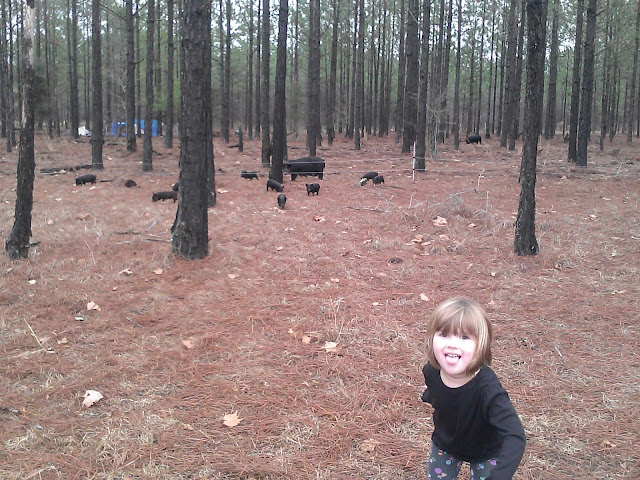She is a 3 month old Tamworth hog. We traded one of our red American Guinea Hog piglets for her. Like the AGH, Tamworths are a heritage breed of hog. Heritage breeds are animals that were commonly raised on homesteads before the advent of Big Agriculture, so they were uniquely suited to the needs of the homestead. Many of these breeds were almost pushed into extinction by the move to more commercially-based livestock operations. Thankfully, there has been a recent surge of interest in these lost breeds, and they are slowly making a comeback. The Livestock Conservancy has both the American Guinea Hog and the Tamworth on the threatened list. I am happy to have both of these breeds on the homestead.
We have been raising AGHs for a couple of years. I love them. They are a smaller breed that used to be a common sight on southern homesteads. They are great foragers, have wonderful temperaments, and are prolific breeders. They are very easy keepers, and don't require much supplemental feed. Here is one of our sows eating hay:
I also love the AGH because the meat is out of this world. It is red and marbled, unlike anything you will ever see in the supermarket! Check it out:
Look at the amazing difference in the way AGHs and Tamworths are built:
 | |
| The AGH - Lard hog supreme |
 | ||
| The Tamworth - Makin' bacon |
SO, we are excited to add this little girl to our farm family, and hope to find her a beau some day in the future, so we can make lots of little bacon machines. In the meantime, what happens when you cross a bacon hog with a lard hog? I dunno, but I want to find out!
THE END
Sorry, I couldn't resist :D














